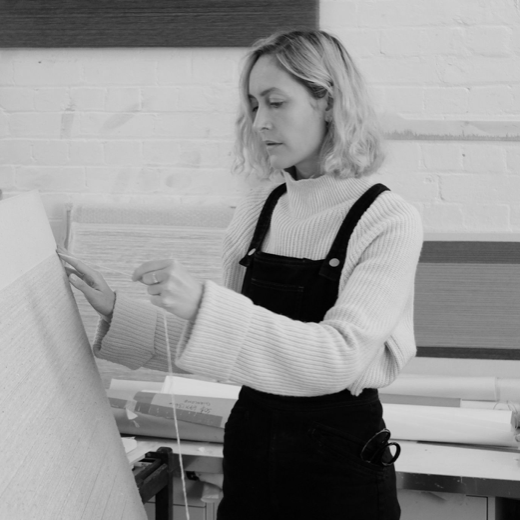
Artist Q&A with Becky Allen
by Dr Claudia Milburn
Q. What first inspired your practice?
A. I have always felt compelled to draw. From a young age the act of drawing came naturally and instinctively – it didn’t feel like a choice, but an inherent reaction to the world around me.
Q. What has been your background / training and how influential has that subsequently been?
A. I studied graphic design and visual communication but felt lost and unsure that these were paths I wanted to explore. It was a reaction to this education that helped me develop my art practice in a transcendent shift from (lost) designer to (focused) artist.
Q. Tell me more about your subject matter for your work?
A. My work is dedicated to a study of the ‘line’. Inspired by weaving’s warp and weft, wayfaring paths and horizon lines, my works express the entanglement of line’s manifold associations that are interwoven throughout human history
Q. Why has paper become the principal medium for your practice?
A. Paper is an essential component within my work and my fascination lies with natural fiber papers such as kozo or bamboo. My drawings labour to illuminate the invisible properties of these surfaces, that emerge when ink interacts with their pulp in an unpredictable and unique way.
Q. Tell me about the processes involved in making your work.
A. My drawing processes are varied, focusing practically on how to use paper as a medium, not just a surface, and meditatively, by using rhythmic mark making as a way to access deep contemplation. I explore the verso of the paper with ink or layering of papers, to achieve an unforeseeable and organic interaction between my marks and the surface. I also use tearing as a form of mark making and natural processes to create colour from the environment to tint my papers.
Q. How significant is the element of serendipity in your practice?
A. It is essential. Much of my practice has been informed by accidental processes or chance encounters with my work. Drawing on the reverse of my paper is once such example.
Q. What is the inspiration behind the specific works in the exhibition and how do they sit within the context of your work to date?
A. The works in this show are a blend of old and new processes. I continue to explore the verso of the paper with ink, whilst other works celebrate a new direction for my drawings. The inclusion of colour was inspired by an Arts Council England supported research journey to learn how to draw colour from the landscape. More gestural mark making using oil marks a turning point of how my research has further developed and liberated my perspective on ‘line’.
Q. Who or what has been your greatest influence as an artist? Which artists most inspire you?
A. Agnes Martin and Georgia O’Keefe.
Q. What is the most challenging element of your practice?
A. My drawings are characterised by their slow creation and often they feel like endurance tests to complete.
Q. What are the latest developments in your work?
A. Colour and gesture.